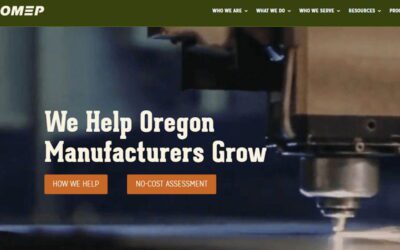In the past couple of years, discussion on the future of manufacturing has birthed the concepts of Industry 4.0 and SMART Manufacturing. What do these concepts mean and how do they affect any changes to your business?
Industry 4.0 and SMART Manufacturing are concepts, meant to capture the idea that many advanced technologies are being integrated and developed for the way that we will manufacture in the near future. These technologies cover a range of hardware, software, and process advancements.
What are the hardware and software advancements that will re-shape the manufacturing environment?
Hardware Advancements in:
Sensor technology, Additive Manufacturing, Automation and Robotics are making these technologies more accessible than ever before. The costs to purchase and use these technologies continues to fall, making them more and more accessible to small and medium-sized businesses.
- The costs of integrating sensors into legacy machinery are dropping. Sensors can easily capture and relay information on vibration, temperature, directional movement, light, humidity, and virtually every quantifiable measure of interest to a manufacturing line. As sensors have developed, so have the avenues for relaying that information back to centralized databases where it can be fed into software and help managers make more informed decisions on pace, equipment maintenance, and waste reduction
- Additive Manufacturing is an umbrella topic that covers advancements in 3D printing. The 3D printing industry has seen meteoric-like advancement in the range of materials that can be economically printed (from plastics to metals), the speed of printing, and the adoption of certain sectors. In the past, this was merely thought of as a method to quickly produce prototypes, but more manufacturers than ever before are using 3D printing to create final products.
- Automation and Robotics have also become more accessible with the proliferation of less expensive off-the-shelf products. Programming and maintaining these solutions has become less expensive as OEMs have refined programming intuitive interfaces so that shop floor employees can set up simple robotic procedures without a degree in computer science.
Justin will present at the 2018 Oregon Manufacturers’ Summit. See him in person! VIEW SESSION INFO >
Software and digital storage advancements in:
ERP (Enterprise Resource Planning), Cloud Based Computing, Big Data, and Artificial Intelligence are likewise changing the tasks, processes, and bottom line earnings of small and medium sized manufacturing businesses.
- ERP systems are very good at linking various aspects of a manufacturing business to empower supervisors and CEOs to make informed decisions about their businesses. A robust ERP system will generally connect business financials with production scheduling, inventory control, shipping, and invoicing. ERP systems have historically only been accessible to large companies, who could bear the cost of employing an ERP administrator. In recent years, many ERP solutions have been developed to service small and niche manufacturing sectors. For example, there are ERP solutions that have been designed for the baking industry and others that have been designed specifically for fabrication job shops. These ERP systems cost less, are easier to tailor to a business, and are easier to set up – thus eliminating the need for expansive training.
- Cloud-Based computing has significantly lowered the capital costs of IT infrastructure. Where once it was a requirement for every business to invest in a bank of servers, now much of a business’s server needs can be migrated to remote, safe, and scalable cloud-based servers. Cloud computing has also made it easier to put an ERP on the shop floor, automate updates to operating systems, and scale storage as the business needs it.
- Big Data is the concept that with sensor technology and cloud-based computing, businesses can collect an extraordinary amount of data on their processes, products, and customers. For that data to be useful it somehow needs to be analyzed and synthesized into a format that business managers can use to make informed decisions. Some ERP systems harness these data to do just that. Much research is focusing on how to make this data more accessible and usable to manufacturing supervisors, and business owners so they can better understand their customers.
- Artificial Intelligence (AI) uses machine learning to make decisions and draw out insights from big data. AI is being used to design lighter weight, stronger and more effective products that cost less. Reducing raw material usage and manufacturing lead time can have a significant bottom line impact for small businesses.
These hardware and software advancements will ultimately lead to some process improvements on the manufacturing floor.
We at OMEP are careful not to say that Industry 4.0 is a cure-all solution for all small and medium sized manufacturers. What we would say is that, where it make sense within the processes and business model of the manufacturer – advanced technologies can bring a competitive market advantage to the brave and forward thinking business.
How will these technologies shift the bottom line and top line of companies in the future?
Each of these technologies is more than just a curiosity – collectively they have the potential to make manufacturing businesses more efficient, cut costs, and reduce lead time, allowing companies to capture a greater share of their market. They are not just around the corner – these technologies are already here. To ensure you capitalize on these technologies’ potential remember that any implementation of them should be thoughtful and make good business sense.



